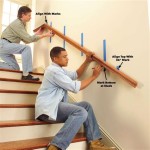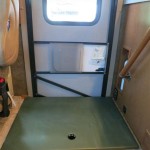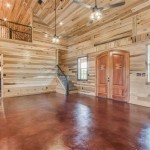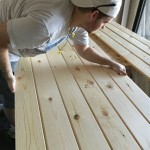How Much Do Interior Designers Charge Per Room?
Determining the cost of engaging an interior designer for a room transformation often centers around the critical question: "How much will this cost per room?" While a definitive, one-size-fits-all answer is elusive, understanding the various pricing models, factors influencing cost, and typical price ranges provides valuable insight. This article explores the multifaceted nature of interior design fees, focusing on per-room charges and offering a comprehensive overview for homeowners seeking professional design assistance.
Interior design services encompass a wide spectrum of tasks, ranging from initial consultations and space planning to furniture selection, color palette development, and project management. Each service component contributes to the overall cost, making it essential to understand how designers structure their fees. Furthermore, project scope, room size, location, and the designer's experience level all play a significant role in determining the final price charged per room.
Understanding Interior Design Pricing Models
Interior designers employ several pricing models, each with its own advantages and disadvantages. The most common models include: hourly rates, flat fees, cost-plus pricing, and percentage-of-project cost. Understanding these models is crucial for interpreting per-room charges and negotiating a fair agreement.
Hourly Rates: This method involves charging a fixed hourly rate for all design services rendered. The total cost depends on the amount of time spent on the project, which can vary depending on its complexity. While this model offers transparency in tracking time spent, it can be challenging for clients to estimate the final cost upfront. Hourly rates for interior designers can range from $50 to $500 or more, depending on their experience and location.
Flat Fees: A flat fee represents a fixed price for a specific scope of work. Often used for smaller projects or well-defined tasks, this model provides cost certainty. However, flat fees may not be suitable for projects with evolving requirements or unforeseen complications. When quoting a flat fee per room, designers typically consider the room's size, complexity, and anticipated design requirements.
Cost-Plus Pricing: This method involves charging the client the actual cost of goods and services, plus a markup (usually a percentage). While offering transparency regarding product costs, it requires careful tracking of all expenses. The markup covers the designer's time, expertise, and overhead. Cost-plus pricing can be applied to individual rooms, providing a detailed breakdown of material costs alongside the designer's profit margin.
Percentage-of-Project Cost: This model calculates the design fee as a percentage of the total project cost, including furniture, materials, and labor. The percentage typically ranges from 10% to 20%, but can vary. While this model aligns the designer's incentives with the project's success, it can be challenging to estimate the final cost accurately, especially during the initial stages. When charging a percentage per room, the total cost is directly proportional to the room's overall budget.
Factors Influencing Per-Room Interior Design Costs
Several factors influence the per-room cost of interior design services. These factors include the project's scope, the room's size, the complexity of the design, the quality of materials, the location, and the designer's experience and reputation.
Project Scope: The range of services required significantly affects the cost. A simple refresh, involving new paint colors and furniture arrangement, will cost less than a complete renovation, including structural changes, electrical work, and plumbing modifications. Designers often break down their services into distinct phases, such as conceptual design, space planning, material selection, and project management. The more phases involved, the higher the overall cost.
Room Size: Larger rooms naturally require more materials, furniture, and labor, increasing the overall cost. Designers may charge a higher flat fee for larger rooms or adjust their hourly rates based on the time required to complete the project.
Design Complexity: Intricate designs, involving custom-built furniture, complex lighting schemes, and elaborate finishes, will cost more than simpler designs. Detailed architectural features, custom millwork, and specialized installations add to the project's complexity and require more expertise and time.
Material Quality: High-end materials, such as designer fabrics, imported tiles, and custom-made furniture, significantly increase the cost. Opting for more affordable alternatives can help control the budget, but may compromise the overall aesthetic and durability. The choice of materials directly impacts the per-room design cost.
Location: Interior design fees vary depending on location. Designers in major metropolitan areas typically charge higher rates than those in smaller towns or rural areas. This reflects the higher cost of living, greater competition, and potentially more demanding client base.
Designer Experience and Reputation: Experienced and highly sought-after designers command higher fees. Their expertise, reputation, and portfolio of successful projects justify their premium rates. While less experienced designers may offer lower rates, their skill level and ability to manage complex projects may be limited.
Typical Per-Room Price Ranges
Providing precise figures for per-room interior design costs is inherently difficult due to the numerous variables involved. However, general price ranges can offer a starting point for budgeting and planning. These ranges assume a moderate level of design complexity and material quality.
Basic Room Refresh: This entails minor updates, such as new paint, updated lighting fixtures, and rearranging existing furniture. The cost typically ranges from $500 to $2,000 per room.
Mid-Range Design: This involves more extensive changes, such as new furniture, flooring, window treatments, and custom accessories. The cost typically ranges from $2,000 to $10,000 per room.
High-End Design: This encompasses complete room transformations, including structural modifications, custom-built furniture, high-end finishes, and professional installation. The cost can easily exceed $10,000 per room and can reach significantly higher depending on the specifics of the project.
It is essential to remember that these are just indicative ranges. The actual cost will depend on the specific factors outlined above. Obtaining detailed quotes from multiple designers is recommended to get an accurate estimate for your project.
Beyond the tangible costs, it's important to consider the value an interior designer brings to a project. Their expertise can prevent costly mistakes, optimize space utilization, enhance the overall aesthetic appeal, and ultimately increase the property's value. Investing in professional design services can be a worthwhile decision in the long run.
Clear communication and a well-defined scope of work are crucial for a successful interior design project. The client should clearly articulate their vision, budget, and expectations to the designer. The designer, in turn, should provide a detailed proposal outlining the services offered, the estimated cost, and the project timeline. A written contract that clearly outlines the roles and responsibilities of both parties is essential.

How Much Do Interior Designers Charge

Interior Designer Cost Fees Fixr

How Much Does An Interior Designer Cost In 2024 Decorilla Design

Interior Designer Cost Fees Fixr

How Much Does An Interior Designer Cost In 2024 Decorilla Design

How Much Interior Designer Charge In Designcafe

How Much Does An Interior Designer Cost In 2024 Decorilla Design

2024 Interior Designer Costs Charges Hourly Rates Fees To Hire

How Much Do Interior Designers Charge In 2024

How Much Does An Interior Designer Cost In 2024 Decorilla Design
Related Posts








